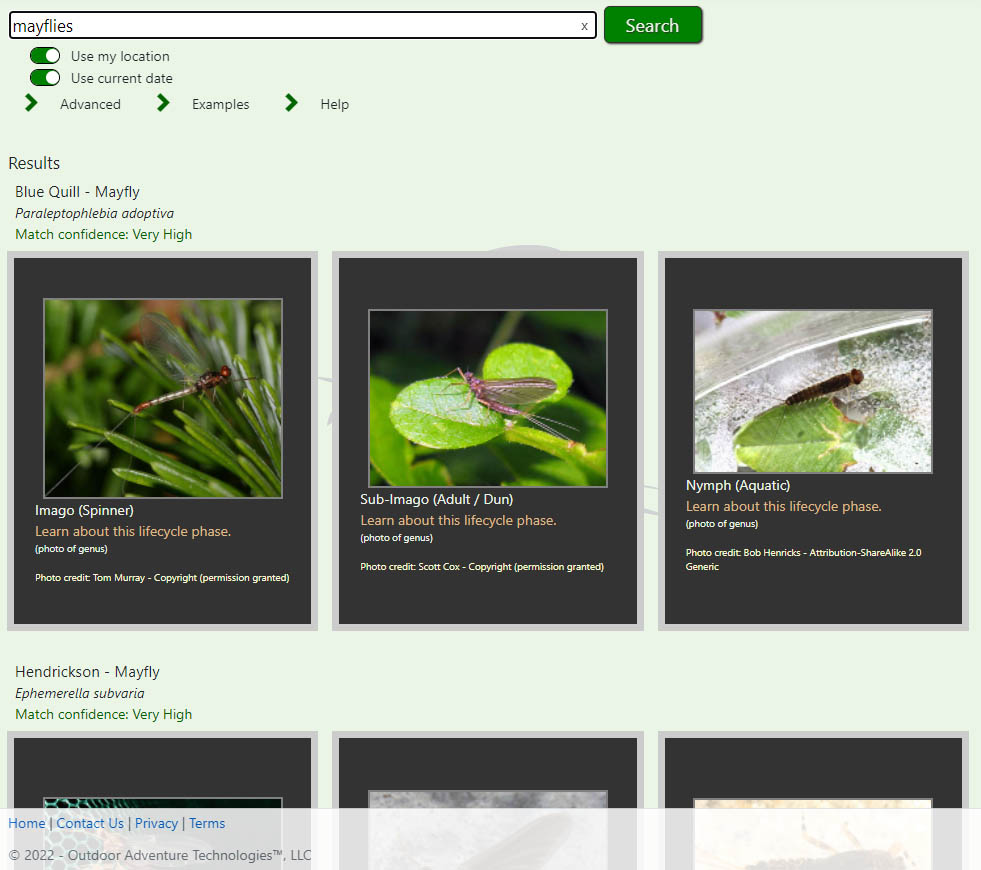The Mayfly, Order Ephemeroptera.
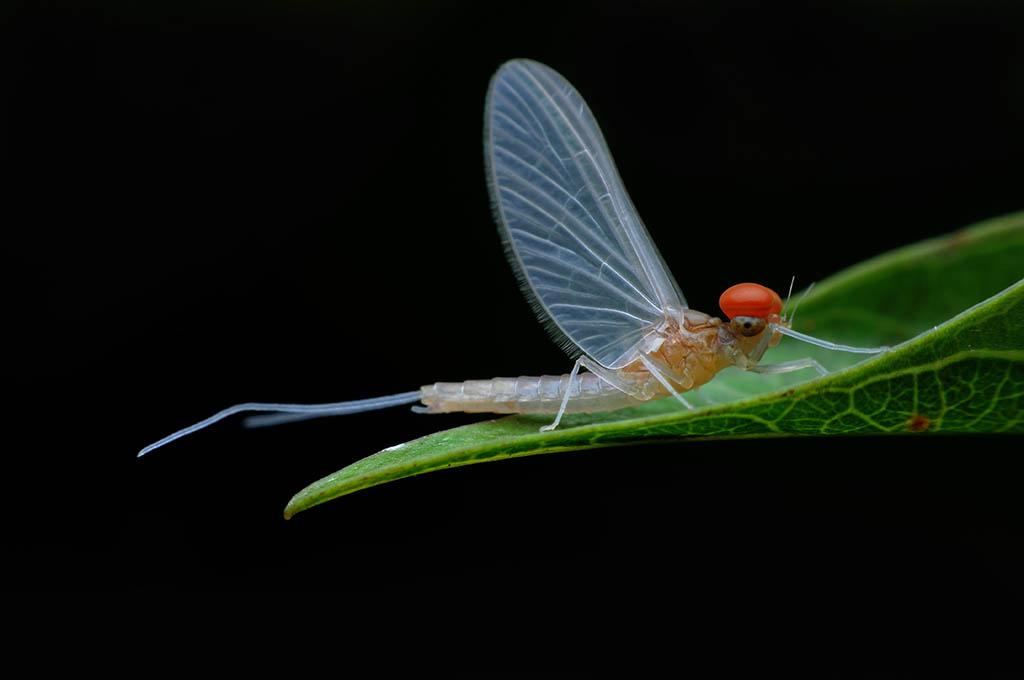
The mayfly is an order of insects that are often thought of as having a very short life span. However, in their aquatic form many mayfly species live underwater as nymphs for a year, sometimes more, before emerging into their adult phases. Mayflies are not very tolerant of pollution so their presence can be an indicator of good water quality.
Mayflies are characterized by upright wings, often referred to as 'sailboat wings,' cylindrical bodies, and two or three tails depending on the species. They range from extremely tiny, at just a few millimeters, to quite large at about an inch-and-a-half or upwards of forty (40) millimeters. Some species have distinct hind wings, which can be used as an excellent key to distinguishing them, while others have very tiny or no hind wings at all.
Mayflies have a unique adult life as they emerge in an immature form called a sub-imago which is usually referred to as a 'dun,' or 'adult,' and later molt into their sexually mature form known as an imago which is almost always called a 'spinner.' Some mayfly species emerge en masse creating prolific, blanket hatches, while others emerge more sporadically, popping off here and there throughout the day. The spinners mate, often in midair, the females lay their eggs, and they die. A number of species create blanket spinner falls as they form mating swarms and fall to the water's surface in the thousands. This two-part adult phase of their life cycle occurs in one day for most species.
Fishing mayflies — matching active nymphs.
Most of a mayfly's life is spent underwater. There are four types of mayfly nymphs: clingers, crawlers, swimmers, and burrowers.
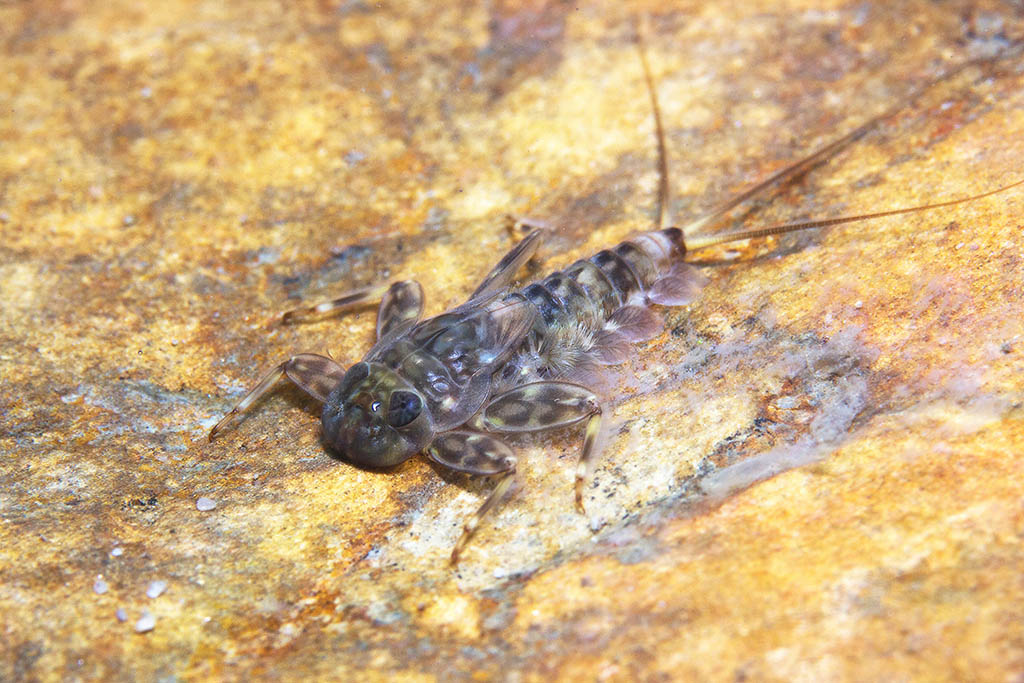
Clinger mayfly nymphs are sometimes referred to as 'flat heads.' Their flattened, teardrop-shaped body is well suited to clinging to rocks in fast water where they feed on detritus and algae. Clinger mayfly nymphs become available to trout as a food source when they lose their grip and are swept into the current which can occur much more frequently as stream flows increase. Additionally, of course, they become available and very vulnerable when they rise towards the surface to emerge and molt into their adult form.
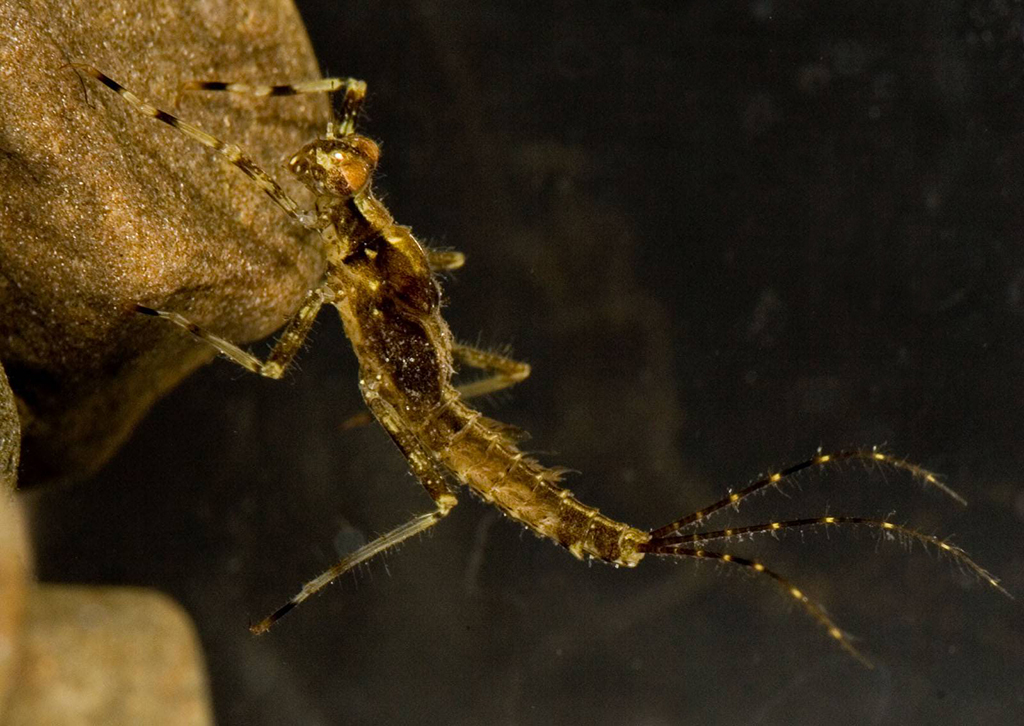
Crawler mayfly nymphs are well suited to life amongst the rocks and gravel of medium to fast streams. Unlike clinger mayflies, their bodies are not designed to handle the full force of fast current, so they crawl around underneath and in between the rocks, gravel and other structure in the stream bed where they feed on detritus and algae. Crawler mayfly nymphs become available to fish when they lose their grip and are swept into the current, tumbling downstream helplessly and desperately trying to get a hold of structure. Increases in stream flow can cause substrate to move and tumble exposing them to the fast current. Crawler mayfly nymphs also become available and vulnerable when their wing cases fill with gas and they begin their ascent to the surface to hatch.
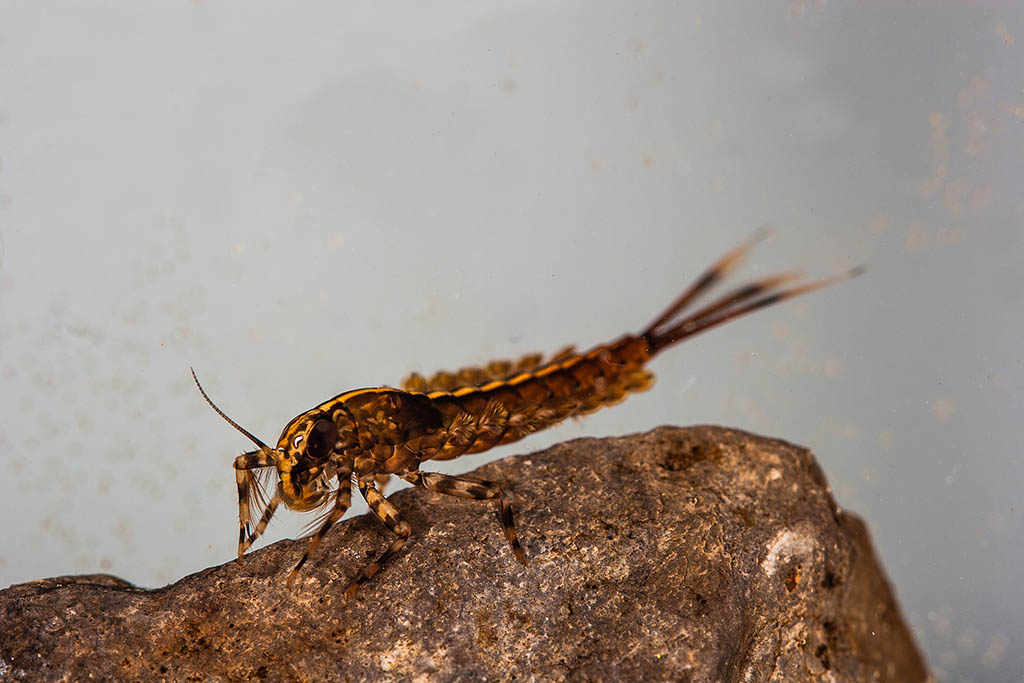
Swimmer mayfly nymphs have a long, torpedo shaped body and are agile swimmers. The shape of their body is not conducive to resisting fast current so they are usually found in stillwater or slow sections of streams. Swimmer mayfly nymphs swim by wiggling their bodies to propel themselves in search of food.
Fishing swimmer style nymphs allows for more movement than fishing crawlers or clingers which simply tumble in the current. Try deliberate twitches and short strips, and when fishing swimmer nymphs in stillwater, such as Callibaetis nymphs, swimming the nymph in short bursts with the figure-eight line retrieval technique can be very effective.
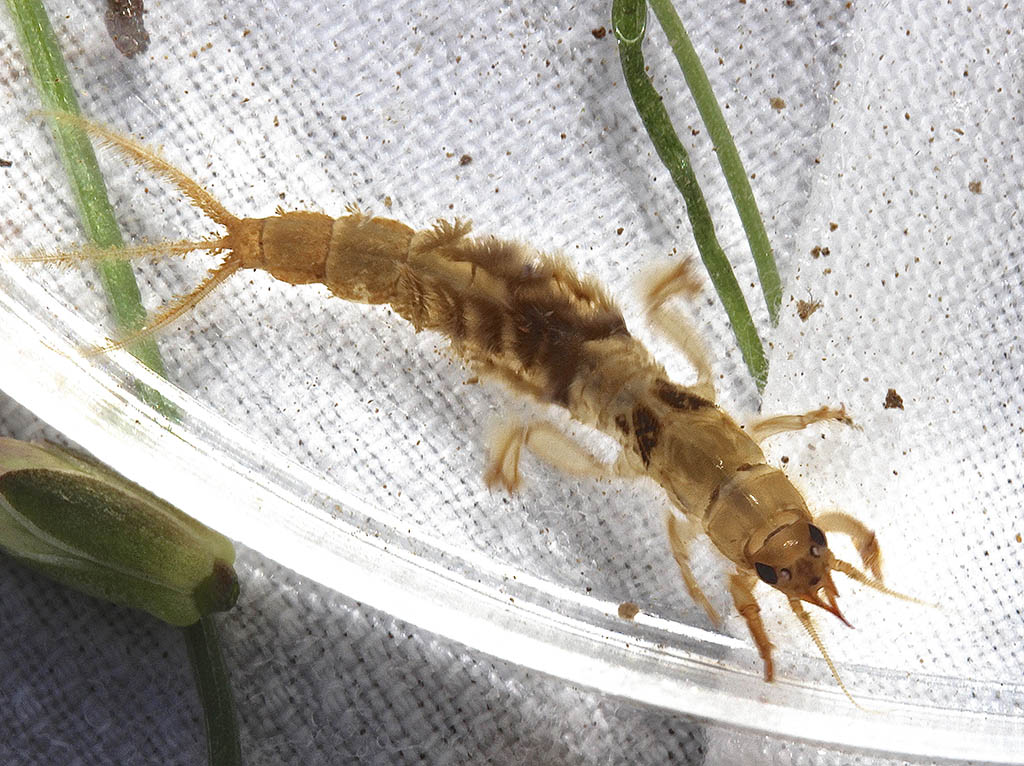
Photo credit: Bob Henricks - Attribution-ShareAlike 2.0 Generic
Burrower mayfly nymphs, as their name suggests, live out their aquatic lives burrowed in fine silt in both stillwater and slow moving streams. In their nymphal form they are generally unavailable to fish as a food source. However, burrowers are quite large and many species hatch in extremely large numbers, so when hatches are imminent fish become very keyed into them. For this reason, fishing burrower style nymphs is most effective in the hours just prior to a hatch, although they can also be fished effectively throughout the day during peak periods of daily hatch activity. While not as agile as swimmer nymphs, burrowers do swim by wiggling their bodies much like swimmers and can be fished in much the same way.
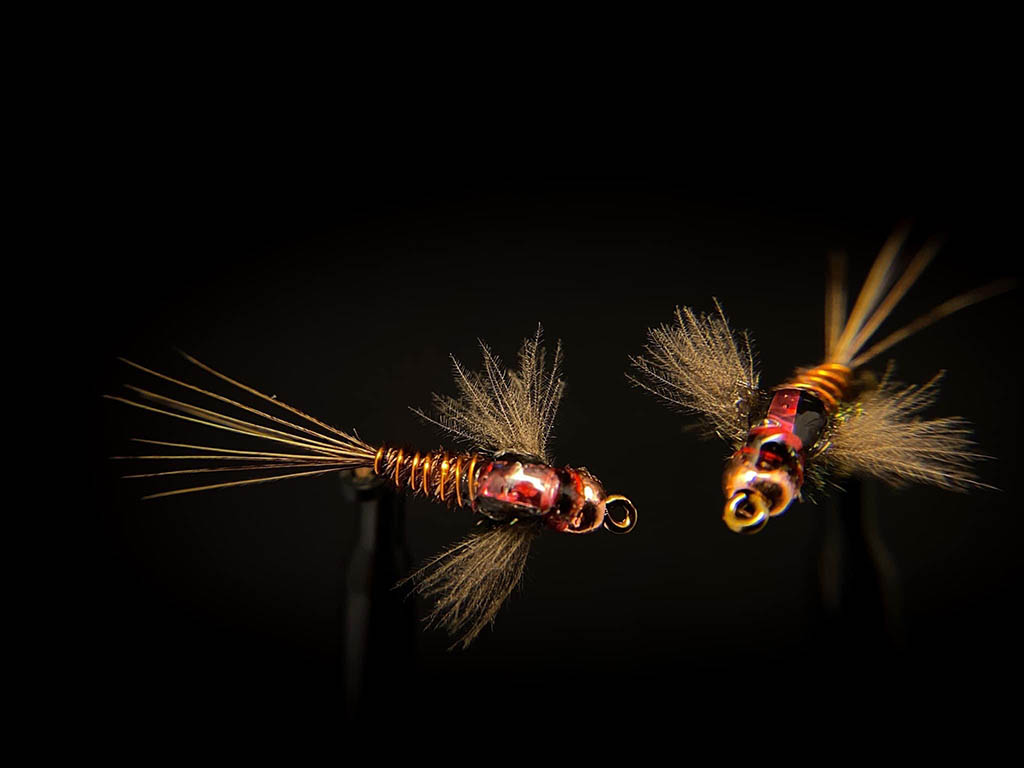
Techniques for fishing mayfly nymphs vary based on whether there is an active hatch being imitated or not. When there is not an imminent or active hatch that you're trying to imitate, nymphs should be fished very deep with the nymph or nymphs 'ticking' along the bottom. Given the size variation among mayfly species it can be very effective to fish a large, weight mayfly nymph such as a Green Drake nymph (Drunella) as the point fly when fishing a tandem nymph rig, and a smaller mayfly nymph as the dropper, with one or both matching the currently active mayflies.
Effective methods of fishing nymphs include indicator-style nymph fishing, drop-shot rigging, and fishing without an indicator using a long, sensitive fly rod and specialized leaders to detect subtle strikes i.e. 'tight-line nymphing' and Euro-nymphing. Nymphing in stillwater can be accomplished through a number of techniques including fishing under an indicator, tight-line nymphing with long leaders, and fishing specialized sink-tip fly lines such as 'midge tip' lines.
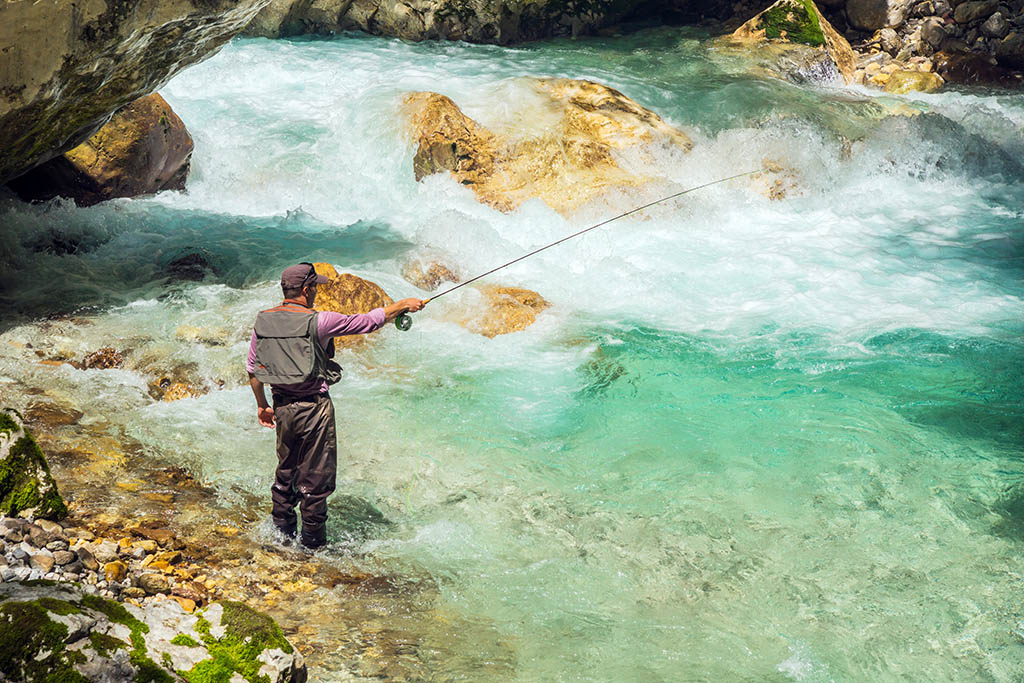
When nymphs are beginning to hatch and ascending through the water column techniques that imitate the rising nymph become very effective. Examples of these include the venerable Leisenring Lift, as well as the use of lighter flies that produce a lot of movement and are suggestive of an emerging insect. Soft hackles, wet flies, and flymphs are particularly effective during early parts of a hatch while fish are still focused more in the mid-to-upper portions of the water column.
Matching the hatch — fishing mayfly emergers and duns.
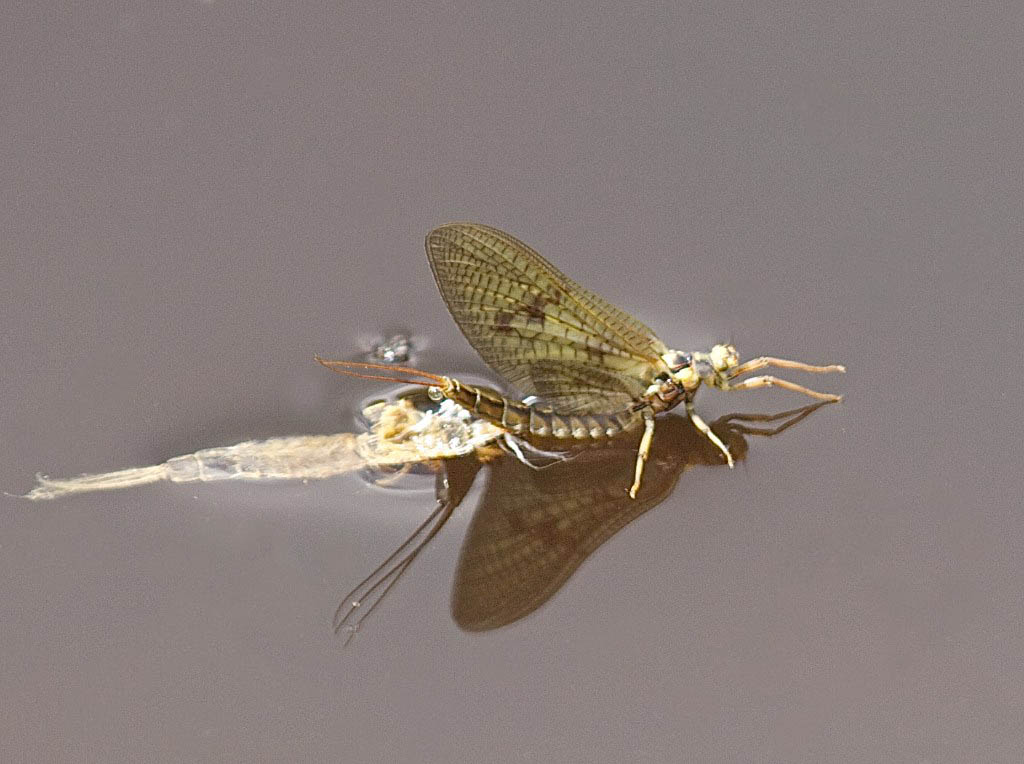
Photo credit: sighmanb - Attribution 2.0 Generic
While there are some species of mayflies who crawl to the shore to emerge, most rise to the surface of the water and emerge from their nymphal shuck in the surface film. Prior to emergence mayfly nymphs become very active, and their wing cases begin to fill with gas causing them to lose their grip on the bottom and rise to the surface. As the insects molt out of their nymphal form on or near the surface of the water, their wings emerge and begin to dry. At this time the mayflies, referred to as 'emergers', are particularly vulnerable to feeding fish as they are still either stuck in their shucks or their wings have not dried sufficiently to fly away to safety.
Some emergers are unable to escape their nymphal shuck and get stuck with their wings or other body parts bent into odd positions. Of course, these insects are completely vulnerable to feeding fish which contributes to the effectiveness of 'cripple' fly patterns. Cold and wet weather prolongs the time that it takes for wings to dry, while mayflies that hatch during the warmer months often take flight almost immediately after reaching the surface. Fully emerged, sexually immature, adult mayflies are called 'sub-imagos' but are usually referred to as 'duns,' or simply as 'adults.'
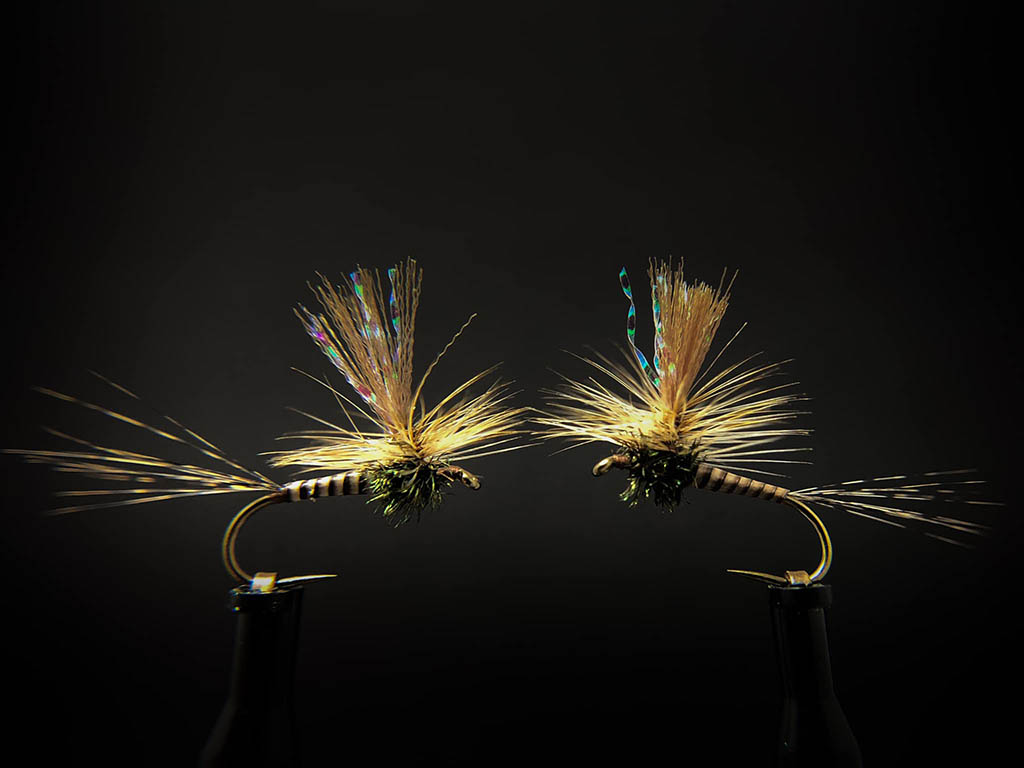
As fish begin to feed on mayfly emergers at or near the surface this type of feeding behavior can be determined based on the rise forms. You'll note that the rises barely dimple the surface as fish gently sip emerging mayflies from just below the surface or from the surface film. When fish are taking emergers just below the surface you will often see the fish roll showing a little bit of back and tail. When they are taking emergers from the surface film you will see just the rings of the rise form as they suction emergers from below.
Fishing subtle mayfly emerger patterns just below the surface or in the surface film can be the difference between success and failure when fish are keyed on emergers. However, it can be very difficult to see where your fly is in those conditions especially if there is a little glare on the water. It is common to fish an emerger pattern 12-18" behind a more visible fly that isn't going to spook selective fish. A parachute emerger, i.e. a parachute-style fly that matches the hatch but has a shuck rather than tails, can be an excellent choice for a sighter fly and acts as a strike indicator when subtle takes on the trailing emerger are not otherwise detected. Note that in these conditions the drift needs to be controlled so that your flies do not move around, or skate. The 'drag free drift' is key to fishing mayfly hatches successfully as mayflies are not active on the surface of the water.
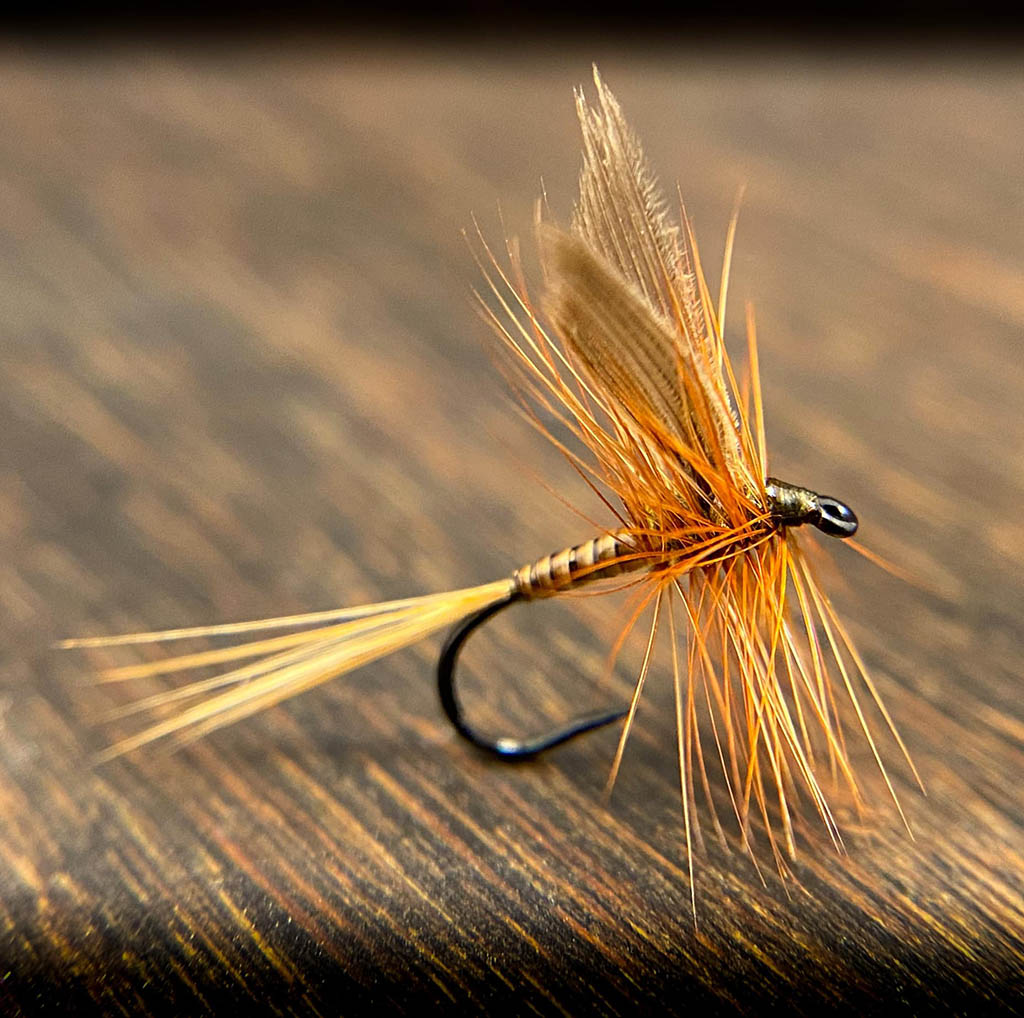
As a hatch progresses it is not uncommon that at least some of the fish will begin feeding on fully emerged duns, despite the fact that they are a more challenging target since they might fly away at any moment. This phase of the hatch is very enjoyable to fish as you will be able to switch to flies that ride high on the surface film and present a more visible profile. When you note that the rise forms are becoming a little more splashy, see fish show their snout, and perhaps even see fish rising to mayflies that escape at the last moment, parachute dun patterns, comparaduns, and upright dun patterns can all be fished effectively with a drag free drift.
Spinner falls — the mating dance.
Mayflies that are lucky enough to emerge without being eaten fly away, run the gauntlet of hungry birds, and if their luck holds out eventually land on vegetation or structure. Once they've reached safety they wait to molt, often overnight, into their mature adult form known as an 'imago' but usually referred to as a 'spinner.' Spinners often form swarms over the water where they mate in the air. The males typically die first and fall to the water exhausted with their wings flat to the water and are referred to as a 'spent spinner.' The females, after allowing their eggs to fertilize briefly, begin depositing their eggs in the water often by dapping the surface repeatedly until they are exhausted and also fall as spent spinners.
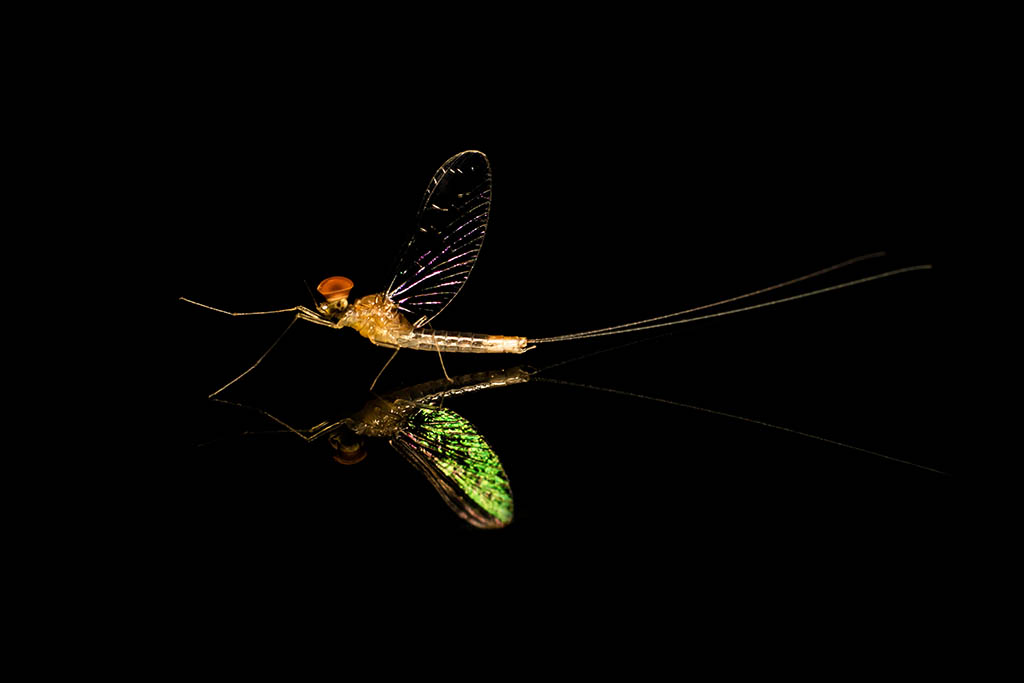
Spinner falls can be prolific and attract greedy trout small and large. When fish are keyed into blanket spinner falls they often hold just below the surface and rise on a steady rhythm, expending minimal energy. Casts targeting these feeding fish need to be very accurate and well-timed, usually with long, fine leaders, to produce as little disturbance as possible in order to not spook the fish.
Fishing mayfly spinner patterns during spinner falls is deadly. Most imagos, or spinners, have nearly transparent wings that catch and refract light. Flat wing material that is very light in color or translucent and contains sparkly fibers is excellent in clear-winged spinner patterns. Again, spinners should be fished with an absolutely drag free drift as the exhausted naturals are immobile.
Try searching Hatchpedia using the single keyword 'mayflies' with the 'Use my location' and 'Use current date' options selected to see a photographic list of mayflies that are known to hatch in your area this time of year.
When you register for a free 7-day trial you get full access to the Hatchpedia website as well as all of the features in the iPhone and Android apps. Our mobile apps work with no internet access or cell service so you will be able to figure out what's hatching when it matters: while you're waist deep in a backcountry lake way out of cell range.
Fishing mayflies - quintessential?
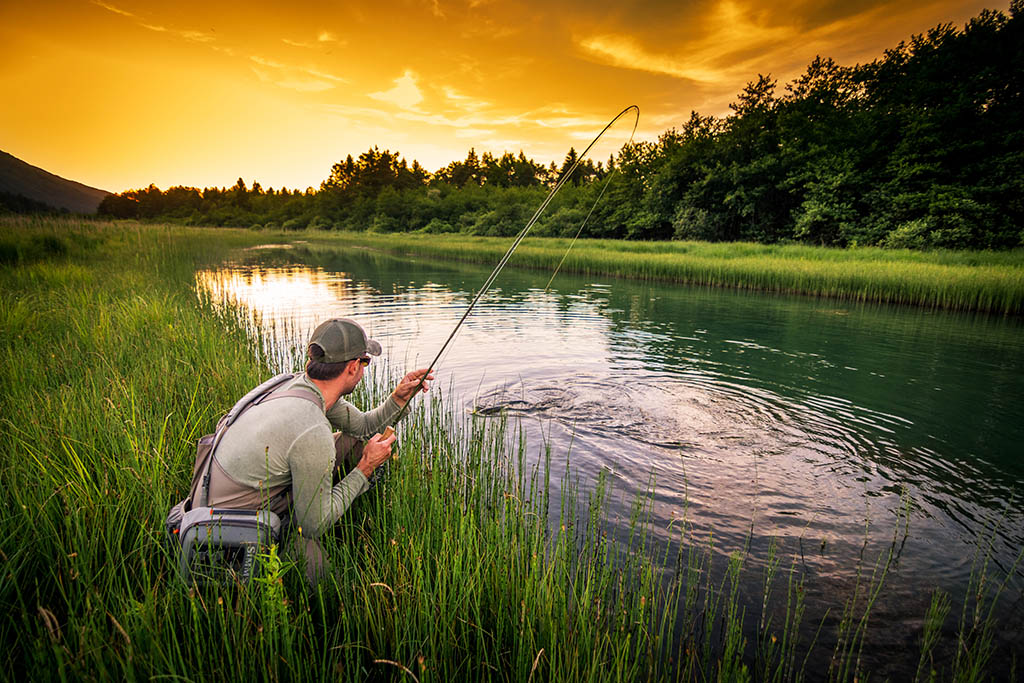
Fishing mayflies, and particularly fishing dry flies to match the hatch, is thought by some to be the apex of fly fishing or at least the apex of fishing for trout on the fly. Mayflies are beautiful, delicate creatures, whose appearance often signals excellent fishing to come. And, while mayflies are certainly the most storied, and seem to be held in the highest regard among trout foods, they do not compose the most plentiful or readily available food source.
Learn more about caddisflies and stoneflies.
If you'd like to easily identify the insects that you encounter on the water, register for a free 7-day trial.
Your web subscription gives you full access to our website and the iOS and Android apps!
You'll be able to use the app with no cell service or internet for two weeks so you're completely covered. Deep in the backcountry Hatchpedia will continue to help you identify insects when it matters - while you're on the water.
